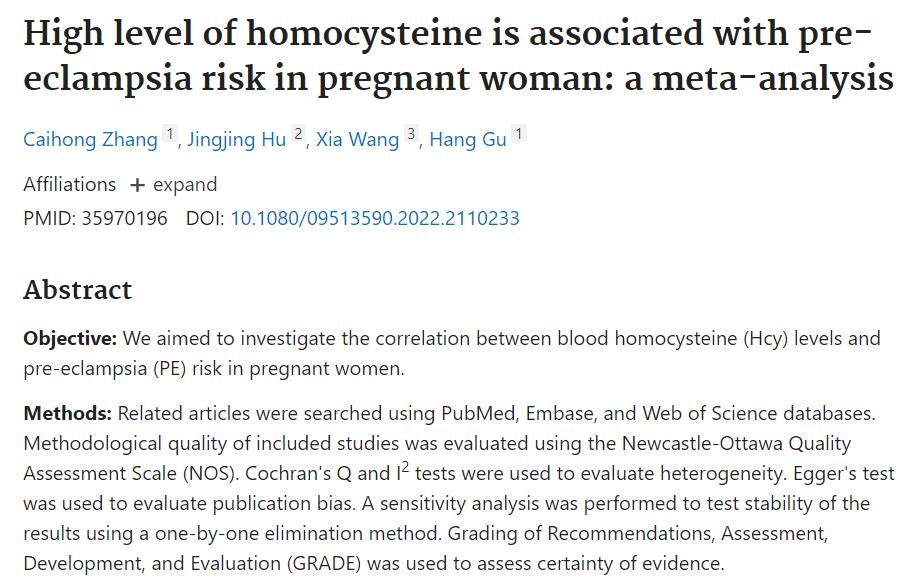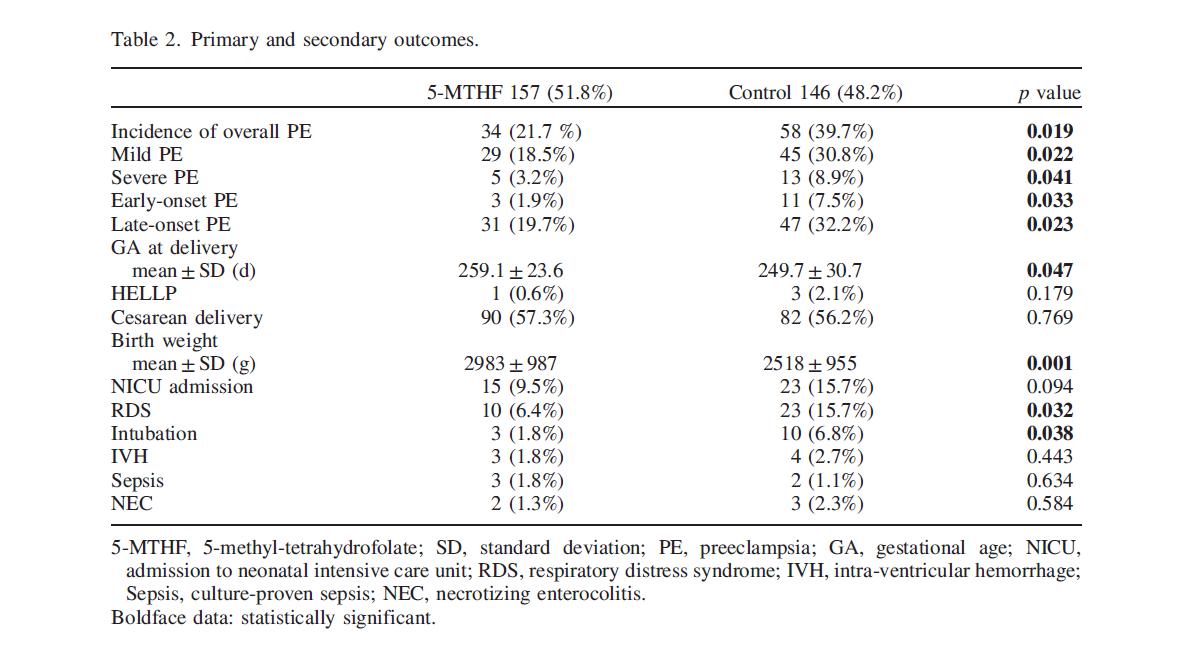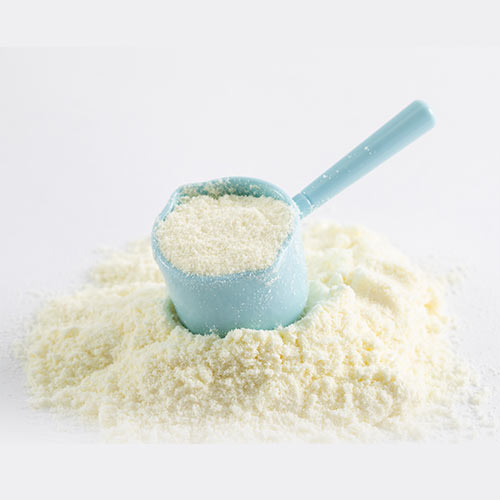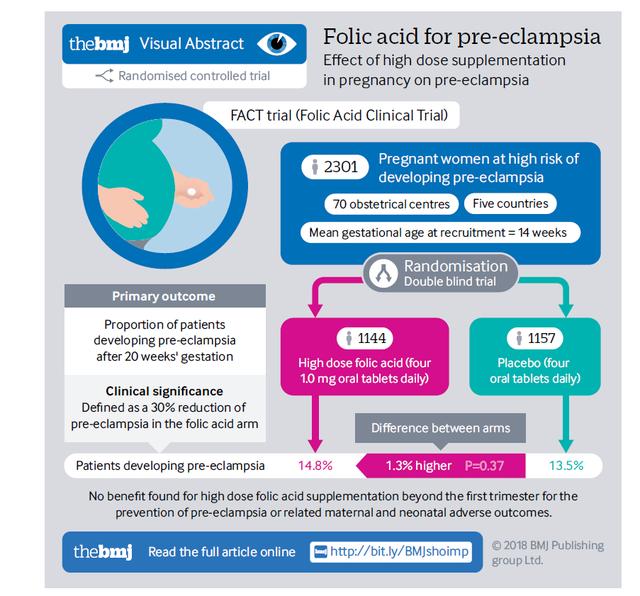Preeclampsia is a pregnancy-specific disorder, affecting 5% to 10% of all pregnancies, and is a significant contributor to maternal and perinatal mortality rates. Characterized by high blood pressure and proteinuria, it can lead to severe complications such as organ dysfunction, restricted fetal growth, and premature birth.

Homocysteine (HCY) and Its Link to Preeclampsia
Homocysteine, a sulfur-containing amino acid, is metabolized with the help of folate, vitamin B12, and the enzyme 5,10-methylenetetrahydrofolate reductase (MTHFR). Elevated plasma HCY levels suggest a disruption in this metabolic pathway and are correlated with an increased risk of preeclampsia. High HCY levels may precipitate preeclampsia by damaging vascular endothelium, promoting blood clot formation, and triggering oxidative stress.

5-Methyltetrahydrofolate: A Key Player in HCY Metabolism and Preeclampsia Prevention
As the active form of folate, 5-MTHF plays a pivotal role in HCY metabolism. It donates a methyl group to convert HCY back into methionine, thus reducing HCY levels in the bloodstream.
Supplementing with 5-MTHF can enhance folate metabolism, decrease HCY levels, and consequently mitigate the risk of preeclampsia. The protective effect of 5-MTHF is likely due to its ability to improve endothelial function and reduce vascular inflammation.

An Italian study demonstrated the efficacy of 5-MTHF supplementation in preventing recurrent preeclampsia in women with a history of the condition. The study involved 303 women with a history of preeclampsia, divided into two groups: one receiving 15 mg of 5-MTHF daily from early pregnancy, and the other serving as a control group without supplementation.

The findings revealed that women supplemented with 5-MTHF had a significantly lower incidence of recurrent preeclampsia (21.7% compared to 39.7% in the control group). Additionally, the rates of severe and early-onset preeclampsia were substantially reduced.

Conclusion
In conclusion, 5-MTHF supplementation may be a promising strategy for preeclampsia prevention, particularly for women with a history of the disease. By lowering HCY levels, it supports vascular health and reduces the likelihood of preeclampsia.
Among various 5-MTHF options, naturalization folate stands out for its safety. The production process is free from harmful substances like formaldehyde and p-toluenesulfonic acid, and the levels of potential impurities such as JK12A and 5-methyltetrahydrofolate are kept extremely low through patented technology, ensuring virtually non-toxic consumption. This ensures the health benefits of folate without any safety concerns.
Reference:
1.Zhang, C., Hu, J., Wang, X., & Gu, H. (2022). High level of homocysteine is associated with pre-eclampsia risk in pregnant woman: A meta-analysis. Gynecological Endocrinology, 38(9), 705-712. https://doi.org/10.1080/09513590.2022.2110233.
2.Saccone G, Sarno L, Roman A, Donadono V, Maruotti GM, Martinelli P. 5-Methyl-tetrahydrofolate in prevention of recurrent preeclampsia. J Matern Fetal Neonatal Med. 2015; published online ahead of print. DOI: 10.3109/14767058.2015.1023189.

 Español
Español Português
Português  русский
русский  Français
Français  日本語
日本語  Deutsch
Deutsch  tiếng Việt
tiếng Việt  Italiano
Italiano  Nederlands
Nederlands  ภาษาไทย
ภาษาไทย  Polski
Polski  한국어
한국어  Svenska
Svenska  magyar
magyar  Malay
Malay  বাংলা ভাষার
বাংলা ভাষার  Dansk
Dansk  Suomi
Suomi  हिन्दी
हिन्दी  Pilipino
Pilipino  Türkçe
Türkçe  Gaeilge
Gaeilge  العربية
العربية  Indonesia
Indonesia  Norsk
Norsk  تمل
تمل  český
český  ελληνικά
ελληνικά  український
український  Javanese
Javanese  فارسی
فارسی  தமிழ்
தமிழ்  తెలుగు
తెలుగు  नेपाली
नेपाली  Burmese
Burmese  български
български  ລາວ
ລາວ  Latine
Latine  Қазақша
Қазақша  Euskal
Euskal  Azərbaycan
Azərbaycan  Slovenský jazyk
Slovenský jazyk  Македонски
Македонски  Lietuvos
Lietuvos  Eesti Keel
Eesti Keel  Română
Română  Slovenski
Slovenski  मराठी
मराठी  Srpski језик
Srpski језик 








 Online Service
Online Service